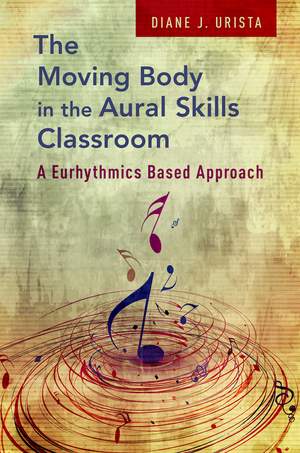Book
$49.75Special import
Contents
- Introduction
- I. Purpose
- Why the Moving Body in the Aural Skills Classroom?
- Healing the Mind-Body Split in College Music Training
- Rhythms from the Body
- What is the Kinesthetic Sense or Sixth Sense?
- Traditional vs. Embodied Approach
- Musical Affect and Expressive Performance
- II. Methodology
- Experience before Analysis
- Spiral of Learning
- Sensation before Conceptualization
- Internalization and Automatisms
- Improvisation: Cultivating One's Voice
- Physiological Evidence
- Reflective Stillness: Movement is Not an End in Itself
- III. Getting Started (Notes to the Instructor)
- Pedagogical Tips
- Chapter 1: Basics
- I. Preliminary Considerations
- Physical Form (to the instructor)
- Movement Tenets (to the instructor and students)
- Overcoming Inhibitions (to the instructor)
- II. Five Fundamental Exercises (to the instructor and students)
- Quick Reaction
- Inhibition and Excitation
- Interference
- Imitation and Canon
- Disassociation
- Chapter 2: Warm ups
- Chapter 3: Rhythm
- I: Basic Rhythmic Concepts and Terminology (to the instructor and students)
- Time-Point vs. Gestural-Rhythm
- Beat
- Meter
- Rhythmic Nuance
- Definitions of Accents and Poetic Feet
- Expressing Gestural Rhythms
- Pedagogical Tips for Teaching Rhythm Exercises (to the instructor)
- II: Rhythmic Subjects
- 1. Beat, Pulse, & Tempo
- 2. Meter-Simple and Compound
- 3. Augmentation-Rhythmic Duration and Expansion
- 4. Subdivision in Simple and Compound Meters
- 5. Rests & Pauses-The Expression of Silence
- 6. Dotted Rhythm
- 7. Syncopation
- 8. Gestural Rhythmic Patterns
- 9. Cross Rhythms and Polyrhythms
- 10. Changing Meters
- 11. Uneven Meters
- 12. Additive Rhythms
- 13. Polymeters and Cross Rhythms
- Chapter 4: Pitch, Scale, and Melody
- 1. The Scale-to and from tonic
- 2. Tonal Centering, Retention, and Recall
- 3. Relative Pitch & Scale Degree Function
- 4. Scalar Fragments-The Scale's Inner workings
- 5. Intervals-A Contextualized Approach
- 6. C-to-C Scales-A Comparative Study of Scales
- 7. Modulation-Strategies for Singing, Hearing, and Improvising
- 8. Sight Singing and Inner Hearing Strategies
- Chapter 5: Harmony
- 1. Chords-Harmonic Building Blocks from the Scale
- 2. Inversions-Triads and Seventh Chords
- 3. Embodying Harmonic Function
- 4. Modulation
- 5. Embodying/Integrating Harmonic Progressions
- Chapter 6
- 1. Phrase
- 2. Forms
- 3. Plastique Animee
- Additional Plastique Animee




